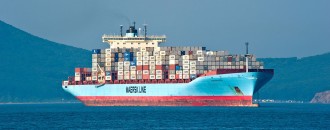
Gradual economic recovery to be led by consumption demand
The Dollar Business Bureau  The gross domestic product (GDP) for the financial year (FY) 2016, will grow by 7.7% (FY15: 7.4%), driven by a further pick up in private consumption demand. Consumption demand is expected to expand 8.1% in FY16 (FY15: 7.1% and FY14: 6.2%), said a rating agency. A significant moderation in inflation and inflationary expectations is likely to boost consumer sentiments, albeit gradually. The share of private consumption demand in GDP is around 60%. Even investment and government expenditure would provide adequate support to consumption-led GDP growth, said a report by India Ratings and Research (Ind-Ra). There are conflicting views with respect to the monsoon in 2015 as Indian Meteorological Department is predicting less-than-normal monsoon and private forecaster Skymet is expecting a normal monsoon in 2015. The report said that it expects agricultural growth to come in at 2.1% in FY16. Although much would depend on the spatial/geographical distribution of rains during the monsoon season, the agricultural growth could be lower in case of a sub-normal monsoon. A sustained government focus on ‘Make in India’ and ‘ease of doing business’ and the successful auction of coal mines could push the industrial growth to 6.5% in FY16 (FY15: 5.9%). The report also expects both wholesale price index (WPI) and consumer price index (CPI) based inflation to moderate to 2.4% and 5.6%, respectively, in FY16. Retail and WPI inflation declined to 5.2% and negative 2.3% in March 2015, respectively. Moderation in inflation/inflationary expectations prompted the Reserve Bank of India (RBI) to cut the repo rate by 25bp each on January 15, 2015 and March 4, 2015. It expects RBI to cut the repo rate by another 50bp by FYE16. Although the unseasonal rains in March 2015 and less-than-normal monsoon in 2015 can up the risk of food inflation, the report believes a) soft global commodity/crude prices, b) low growth in the minimum support price of food grains in FY16, c) low pricing power of the manufacturing sector and d) effective government intervention in the food market would keep the inflation within the glide path of RBI. Thus, the report expects the average 10-year Government-securities yield to trade in the range of 7.2%-7.3% by FYE16. India, a net commodity importer, benefitted considerably from the fall in global commodity prices especially crude in FY15. Even in FY16, the country is likely to reap this benefit, in view of soft crude prices. As a result, current account deficit for FY16 could come in at US$ 22.5 bn (1.0% of the GDP), down from Rs 23.1 bn in FY15 (1.1% of GDP). With capital inflows remaining strong, the agency expects a net addition of US$ 74.2 bn to India’s forex reserves in FY16, putting pressure on the rupee to appreciate. However, Ind-Ra expects RBI to intervene and mange it in the band of 61/USD-64/USD, leading to the rupee settling around an average 63/USD in FY16.
The gross domestic product (GDP) for the financial year (FY) 2016, will grow by 7.7% (FY15: 7.4%), driven by a further pick up in private consumption demand. Consumption demand is expected to expand 8.1% in FY16 (FY15: 7.1% and FY14: 6.2%), said a rating agency. A significant moderation in inflation and inflationary expectations is likely to boost consumer sentiments, albeit gradually. The share of private consumption demand in GDP is around 60%. Even investment and government expenditure would provide adequate support to consumption-led GDP growth, said a report by India Ratings and Research (Ind-Ra). There are conflicting views with respect to the monsoon in 2015 as Indian Meteorological Department is predicting less-than-normal monsoon and private forecaster Skymet is expecting a normal monsoon in 2015. The report said that it expects agricultural growth to come in at 2.1% in FY16. Although much would depend on the spatial/geographical distribution of rains during the monsoon season, the agricultural growth could be lower in case of a sub-normal monsoon. A sustained government focus on ‘Make in India’ and ‘ease of doing business’ and the successful auction of coal mines could push the industrial growth to 6.5% in FY16 (FY15: 5.9%). The report also expects both wholesale price index (WPI) and consumer price index (CPI) based inflation to moderate to 2.4% and 5.6%, respectively, in FY16. Retail and WPI inflation declined to 5.2% and negative 2.3% in March 2015, respectively. Moderation in inflation/inflationary expectations prompted the Reserve Bank of India (RBI) to cut the repo rate by 25bp each on January 15, 2015 and March 4, 2015. It expects RBI to cut the repo rate by another 50bp by FYE16. Although the unseasonal rains in March 2015 and less-than-normal monsoon in 2015 can up the risk of food inflation, the report believes a) soft global commodity/crude prices, b) low growth in the minimum support price of food grains in FY16, c) low pricing power of the manufacturing sector and d) effective government intervention in the food market would keep the inflation within the glide path of RBI. Thus, the report expects the average 10-year Government-securities yield to trade in the range of 7.2%-7.3% by FYE16. India, a net commodity importer, benefitted considerably from the fall in global commodity prices especially crude in FY15. Even in FY16, the country is likely to reap this benefit, in view of soft crude prices. As a result, current account deficit for FY16 could come in at US$ 22.5 bn (1.0% of the GDP), down from Rs 23.1 bn in FY15 (1.1% of GDP). With capital inflows remaining strong, the agency expects a net addition of US$ 74.2 bn to India’s forex reserves in FY16, putting pressure on the rupee to appreciate. However, Ind-Ra expects RBI to intervene and mange it in the band of 61/USD-64/USD, leading to the rupee settling around an average 63/USD in FY16.
This article was published on April 27, 2015 – 7:20 pm IST






 to success.
to success.